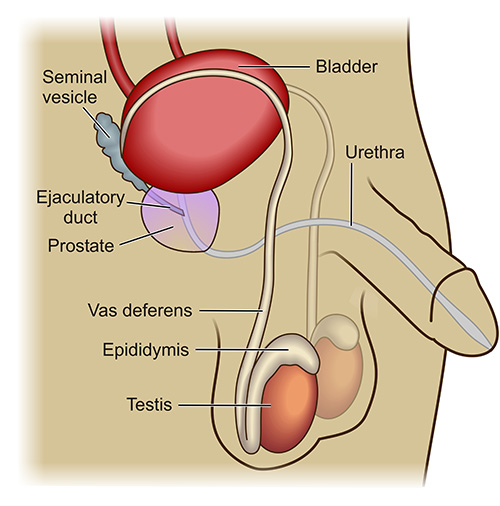Azoospermia is the term used when there is no sperm in a man’s ejaculate.
This condition affects about 1 out of every 200 men and is an important cause of male infertility.
In general terms, azoospermia can be classified as follows:
1. Non-Obstructive Azoospermia
No sperm production by the testicle
Men with non-obstructive azoospermia have a problem with sperm production in the testicles – there is either zero sperm cells being produced or only a tiny amount of sperm which is insufficient and not picked up when analyzing the ejaculate.
If the production of sperm in only 1 of the testicles is affected, there will still be enough sperm present in the ejaculate – this sperm comes from the other testicle. To have zero sperm cells present in the ejaculate, a man must therefore have a problem with sperm production in both of his testicles.
The causes of non-obstructive azoospermia include:
- Infections: Mumps that spreads to the testicles
- Genetic: Sex chromosome abnormalities, Klinefelter syndrome
- Undescended testicles
- Chemotherapy for cancer treatment
Until recently there was very little hope of fatherhood for men with non-obstructive azoospermia and it was only in very rare cases where testicular sperm production could be recovered. However, in the last 20 years major breakthroughs lead to the discovery that up to 60% of men with non-obstructive azoospermia actually have sperm present in their testicles, and that this sperm can be obtained microsurgically and used for assisted fertility procedures (ART / IVF / ICSI).
Subsequently, the technique of Microdissection Testicular Sperm Extraction (micro-TESE) was developed for obtaining sperm cells from these men and today many men with non-obstructive azoospermia are able to have children of their own.
2. Obstructive Azoospermia
Normal sperm production by the testicle
BUT
Abnormal sperm transport to the outside
Men with obstructive azoospermia have normal function of their testicles and intact production of sperm. However, the sperm in the testicle never reach the “outside” because of a blockage somewhere along the way of transport.
Under normal circumstances, sperm cells are produced in the testicle and swim through a network of channels and tubes to reach the outside. In cases of obstructive azoospermia there is a total blockage to sperm flow. This blockage can be inside the testicle, the epididymis, vas deferens, seminal vesicle, ejaculatory duct (in the prostate) or the urethra (bladder pipe).

Structures and tubes involved in the production and transport of sperm
If transport of sperm from only 1 of the testicles is blocked, there will still be enough sperm present in the ejaculate – this sperm comes from the other testicle. To have zero sperm cells present in the ejaculate, a man must therefore have a total blockage of transport from both of his testicles.
The causes of obstructive azoospermia include:
- Infections: Urinary Tract Infections, Sexually Transmitted Infections, Tuberculosis
- Previous surgery:Hernia repair, Vasectomy
- Genetic abnormalities:Men born without a vas deferens
- Unknown:In many cases no obvious cause can be found
Obstructive azoospermia is managed by surgical repair of the blocked area. This is specialized and challenging surgery but a high success rate can be expected if the surgeon has sufficient experience and skill in Urological microsurgery.
